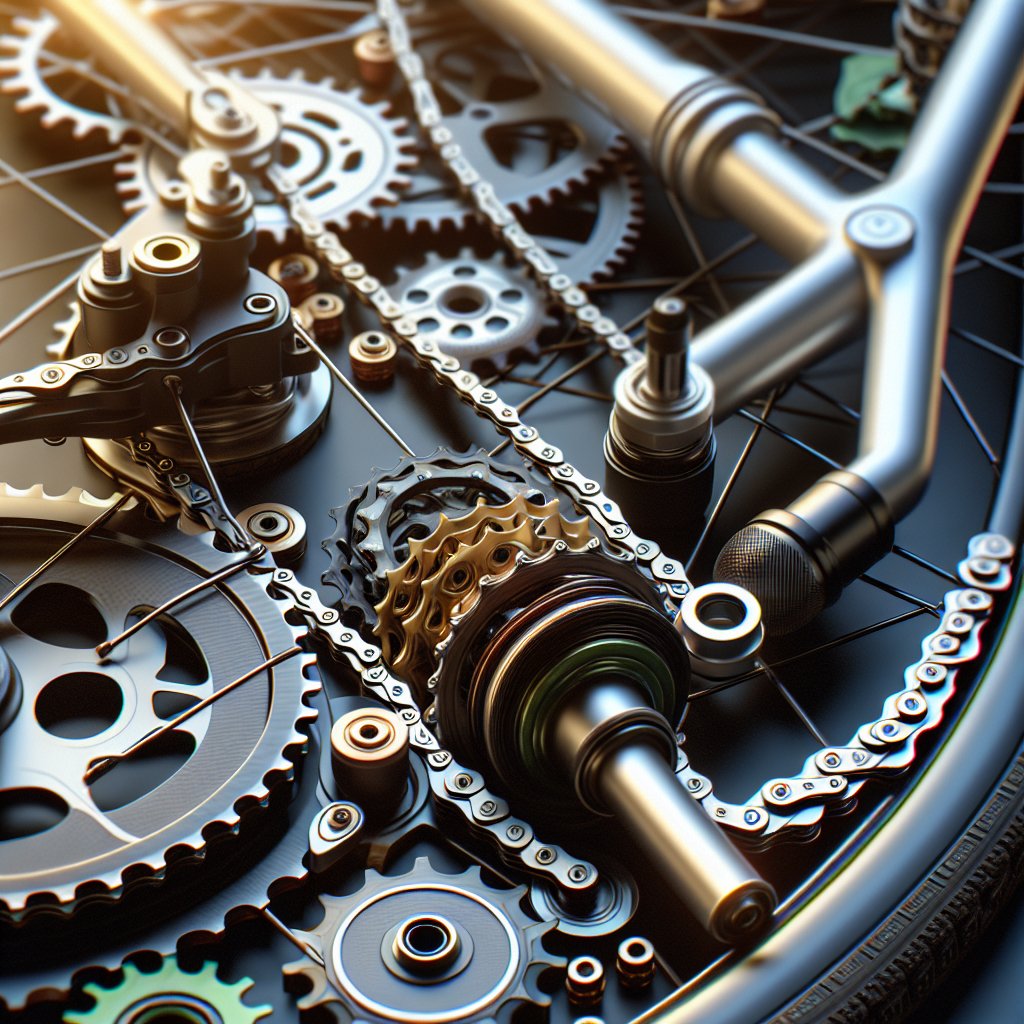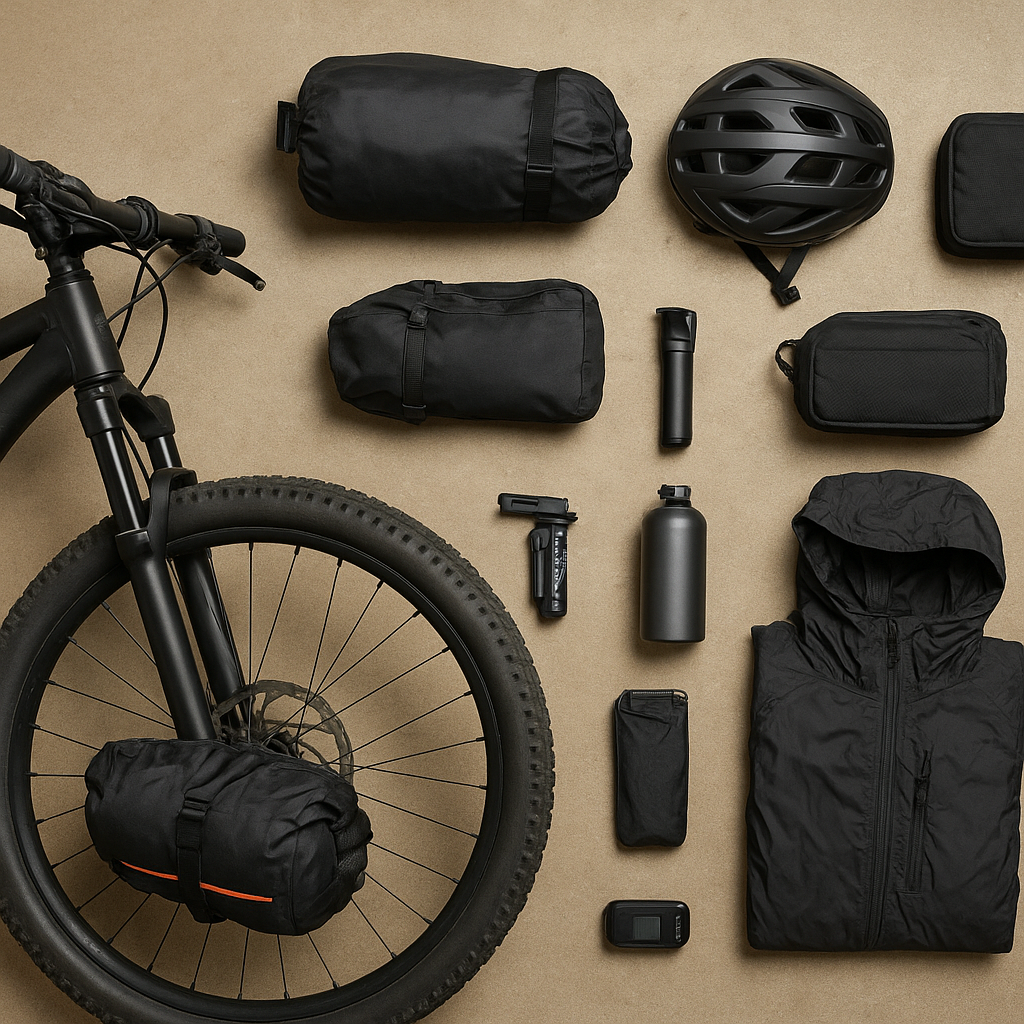Maintaining a smooth and quiet ride is essential for any cyclist, whether you’re a casual rider or a seasoned professional. However, noisy gears and chain skipping can disrupt your cycling experience and indicate underlying issues with your bike’s drivetrain. This article will guide you through troubleshooting these common problems, helping you identify the causes and implement effective solutions.
Understanding the Basics of Your Drivetrain
Before diving into troubleshooting, it’s crucial to understand the components of your bike’s drivetrain. The drivetrain includes the chain, chainrings, cassette, derailleurs, and shifters. These parts work together to transfer power from your pedals to the wheels, allowing you to move forward. Any issues within this system can lead to noisy gears and chain skipping.
The Chain
The chain is the most critical component of the drivetrain. It connects the front chainrings to the rear cassette, enabling the transfer of power. A well-maintained chain ensures smooth shifting and efficient power transfer. Chains can wear out over time, leading to elongation and poor performance.
The Derailleurs
Derailleurs are responsible for moving the chain between different gears. The front derailleur shifts the chain between the chainrings, while the rear derailleur moves it across the cassette. Properly adjusted derailleurs are essential for smooth and accurate shifting.
The Cassette and Chainrings
The cassette is a cluster of sprockets located on the rear wheel, while the chainrings are attached to the crankset at the front. These components come in various sizes and configurations, allowing for different gear ratios. Worn or damaged sprockets and chainrings can cause noisy gears and chain skipping.
Common Causes of Noisy Gears and Chain Skipping
Several factors can contribute to noisy gears and chain skipping. Identifying the root cause is the first step in resolving these issues. Here are some common culprits:
Worn Chain
A worn chain is one of the most common causes of noisy gears and chain skipping. Over time, the chain elongates, causing poor engagement with the cassette and chainrings. This can lead to slipping and noise during shifting.
Dirty or Dry Chain
A dirty or dry chain can also cause noise and poor shifting performance. Dirt and grime can accumulate on the chain, leading to increased friction and wear. Additionally, a dry chain lacks lubrication, causing it to squeak and skip.
Misaligned Derailleurs
Misaligned derailleurs can prevent the chain from smoothly transitioning between gears. This misalignment can be due to improper adjustment, bent derailleur hangers, or worn components. Ensuring that your derailleurs are correctly aligned is crucial for smooth shifting.
Worn Cassette and Chainrings
Worn sprockets on the cassette and chainrings can cause the chain to skip and produce noise. As these components wear, their teeth become rounded and less effective at engaging the chain. Regular inspection and replacement of worn parts are essential for maintaining a smooth drivetrain.
Improper Cable Tension
Cable tension plays a significant role in shifting performance. If the cables are too loose or too tight, the derailleurs may not move the chain accurately between gears. Ensuring proper cable tension is vital for precise shifting.
Troubleshooting and Solutions
Now that we’ve identified the common causes of noisy gears and chain skipping, let’s explore some troubleshooting steps and solutions to address these issues.
Inspecting and Replacing the Chain
Start by inspecting your chain for signs of wear. Use a chain wear indicator tool to measure elongation. If the chain is worn beyond the recommended limit, it’s time to replace it. A new chain will improve shifting performance and reduce noise.
Cleaning and Lubricating the Chain
Regularly clean your chain to remove dirt and grime. Use a degreaser and a brush to thoroughly clean the chain, then rinse it with water and let it dry. Once clean, apply a suitable chain lubricant to ensure smooth operation. Wipe off any excess lubricant to prevent attracting more dirt.
Adjusting the Derailleurs
Properly adjusting your derailleurs is crucial for smooth shifting. Start by checking the alignment of the derailleur hangers. If they are bent, use a derailleur hanger alignment tool to straighten them. Next, adjust the limit screws to ensure the derailleurs can move the chain across the entire range of gears without overshooting. Finally, fine-tune the cable tension to achieve precise shifting.
Inspecting and Replacing the Cassette and Chainrings
Examine the teeth on your cassette and chainrings for signs of wear. If the teeth are rounded or damaged, it’s time to replace these components. Installing new sprockets and chainrings will improve chain engagement and reduce noise.
Checking and Adjusting Cable Tension
Inspect the cables for fraying or damage and replace them if necessary. To adjust cable tension, use the barrel adjuster on the derailleur or shifter. Turn the barrel adjuster clockwise to increase tension and counterclockwise to decrease tension. Make small adjustments and test the shifting until it operates smoothly.
Preventive Maintenance Tips
Preventive maintenance is key to avoiding noisy gears and chain skipping. Here are some tips to keep your drivetrain in top condition:
Regular Cleaning
Clean your drivetrain regularly to prevent the buildup of dirt and grime. A clean drivetrain operates more smoothly and lasts longer.
Proper Lubrication
Lubricate your chain regularly to reduce friction and wear. Use a high-quality chain lubricant and apply it sparingly to avoid attracting dirt.
Routine Inspections
Inspect your drivetrain components regularly for signs of wear and damage. Address any issues promptly to prevent further problems.
Timely Replacements
Replace worn components, such as the chain, cassette, and chainrings, as needed. Timely replacements ensure optimal performance and prevent more significant issues down the road.
Conclusion
Noisy gears and chain skipping can be frustrating, but with proper troubleshooting and maintenance, you can keep your bike’s drivetrain running smoothly. By understanding the components of your drivetrain, identifying common causes of issues, and implementing effective solutions, you’ll enjoy a quieter and more efficient ride. Regular preventive maintenance will also help you avoid these problems in the future, ensuring a more enjoyable cycling experience.












